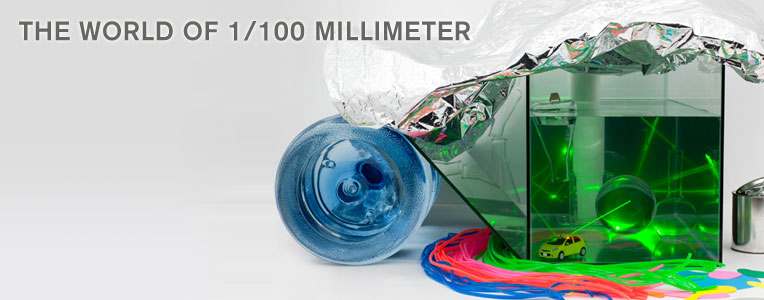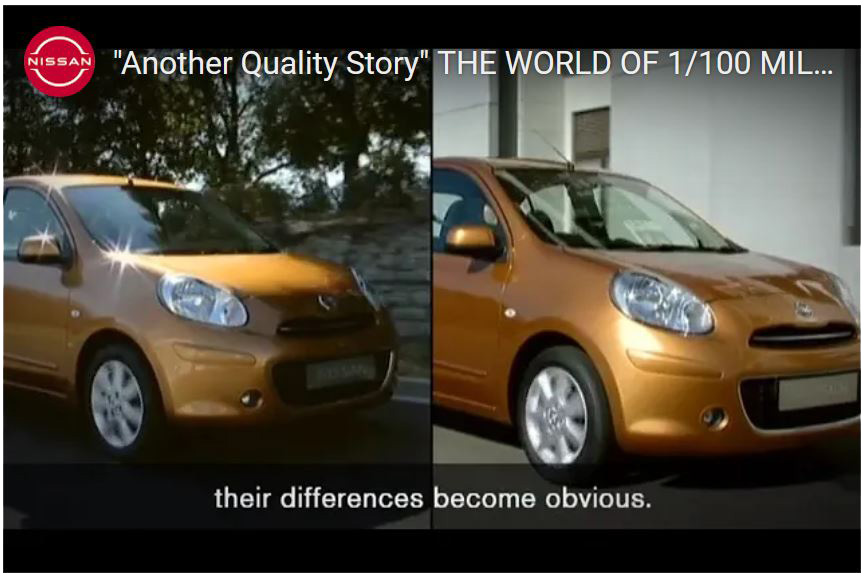The World of 1/100 Millimeter


The World of 1/100 Millimeter1:55
They say you can't build what you can't measure.
And when you can measure things really precisely, you can build things to an extraordinary quality.
At, Nissan, they have developed a device that they call the "3 Dimensional Measurement Machine"
to detect the minutest of discrepancies in their vehicles.
Nozomi Iida Senior Engineer
We shine the slit of laser light that comes from the tip of the 3-Dimensional Measurement Machine
onto the object we want to measure, and scan the sectional form
to accurately measure every detail of the three-dimensional form and convert it to data.
The secret lies in the shape of the laser's beam of light.
It's not a point, like most lasers we think of, but a slit of light which can scan a whole area of the car in one go.
If two seemingly idetical cars are measured at this level, their differences become obvious.
For example it checks to see that the car doors will fit exactly -and we mean exactly- down to 1/100 millimeter.
Nozomi Iida Senior Engineer
By taking data for the whole surface, we really know it down to the details, so we can, for example,
compare the actual car against the CAD data generated at the design stage,
and find out, simply and specifically, how we should modify that part.
At, Nissan, surprisingly precise cars are developed through the eye of a laser
that will detect the difference of even 1/100millimeter.
Nozomi Iida Senior Engineer
By manufacturing each individual component precisely (using the 3-Dimensional Measurement Machine),
we can make good components. By combining those good components, we can make good cars,
and we want to use that result to create cars of high performance, quality and durability.

